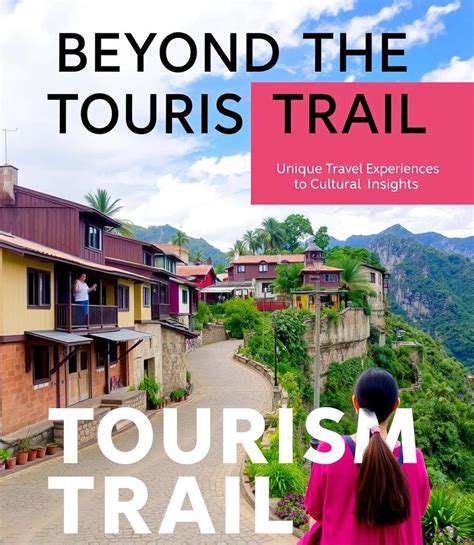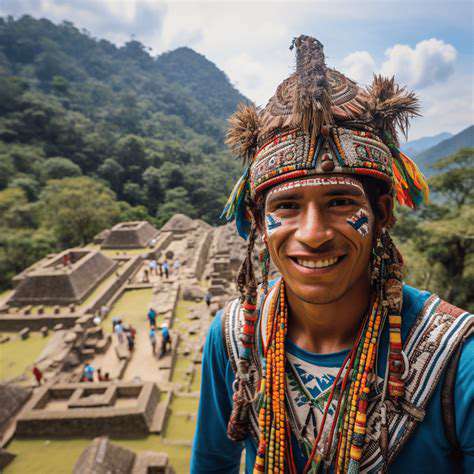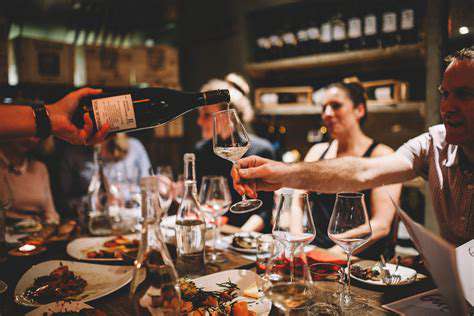Photography Ideas for Travel Storytelling

Unveiling Hidden Gems
While most travelers stick to well-known attractions, those who wander off the beaten path often uncover extraordinary places few ever see. These secret spots hold untold stories and provide a genuine taste of local life. By avoiding crowded tourist hubs, you can experience a destination's true character through quiet alleyways, family-run shops, and unexpected natural wonders.
Some of my most cherished travel moments came from accidental discoveries - a tiny bookstore run by a passionate collector, or a hillside viewpoint known only to locals. These unplanned encounters create lasting memories that no guidebook can replicate. The joy of travel lies not in checking off landmarks, but in stumbling upon places that feel like personal discoveries.
Immersive Cultural Experiences
Meaningful travel goes beyond snapping photos of famous sites. It's about rolling up your sleeves and participating in daily life - whether that means learning traditional crafts from artisans or sharing meals with local families. These hands-on experiences reveal the soul of a place in ways passive observation never could.
Cultural understanding grows through participation, not spectatorship. When I joined a Balinese family for their daily temple offerings, I gained more insight into their beliefs than any museum exhibit could provide. Such moments of connection remind us that despite surface differences, we all share fundamental human experiences.
Sustainable Travel Practices
Choosing independent guesthouses over chain hotels keeps tourism dollars in the community. Eating at neighborhood restaurants supports local families directly. These small decisions create ripple effects that help preserve cultural heritage while minimizing environmental strain.
During my stay in a Peruvian mountain village, I saw how community-based tourism transformed lives. Responsible travel creates mutual benefits - visitors gain authentic experiences while locals maintain economic independence without sacrificing their way of life.
Authentic Food Experiences
The most memorable meals often come from humble street stalls or family kitchens, where recipes pass through generations. These culinary traditions tell stories of migration, adaptation, and cultural exchange that no fancy restaurant can match.
Food serves as the most delicious history lesson available. When I learned to make tagine from a Berber family in Morocco, each spice told part of their ancestral journey. Such edible education creates connections that linger long after the flavors fade.
Over-the-counter pain relievers are medications that can be purchased without a prescription. These medications are typically used for mild to moderate pain relief. Common OTC pain relievers include acetaminophen, ibuprofen, and aspirin. Always follow dosage instructions carefully to prevent potential side effects.

Post-Processing and Editing: Enhancing the Narrative
Refining the Visual Narrative
Thoughtful editing transforms snapshots into storytelling. Adjusting light and shadow can dramatically alter an image's emotional impact. I've found that subtle tweaks often make the biggest difference - a slight warmth adjustment can turn a cold cityscape into a nostalgic memory.
Sharpening Composition and Focus
Sometimes the perfect shot requires minor adjustments after capture. Cropping can eliminate distracting elements, while perspective correction can restore architectural integrity. These technical fixes should serve the image's story rather than become the focus themselves.
Color Grading and Mood Setting
Color choices create psychological responses. Warm tones evoke comfort, while cooler palettes suggest detachment. I often spend hours testing variations before settling on a color scheme that matches my memory of a place's atmosphere.
Removing Distractions and Enhancing Details
Careful cleanup lets the image's true subject shine. Whether removing modern intrusions from historical sites or minimizing visual clutter, these edits help viewers focus on what matters most.
Adding Personal Touches and Artistic Expression
The final polish reflects individual style. Some photographers prefer documentary realism, while others embrace creative interpretation. My own approach varies - sometimes a light texture overlay better conveys how a place felt in person.





![Family Travel Itinerary Ideas [Worldwide Destinations]](/static/images/27/2025-05/ExoticAsianExplorations3AAncientWondersandVibrantCultures.jpg)

![Taking a Pottery Workshop in Morocco [Cultural Experience]](/static/images/27/2025-05/BeyondtheWorkshop3AConnectingwiththeLocalCommunity.jpg)



